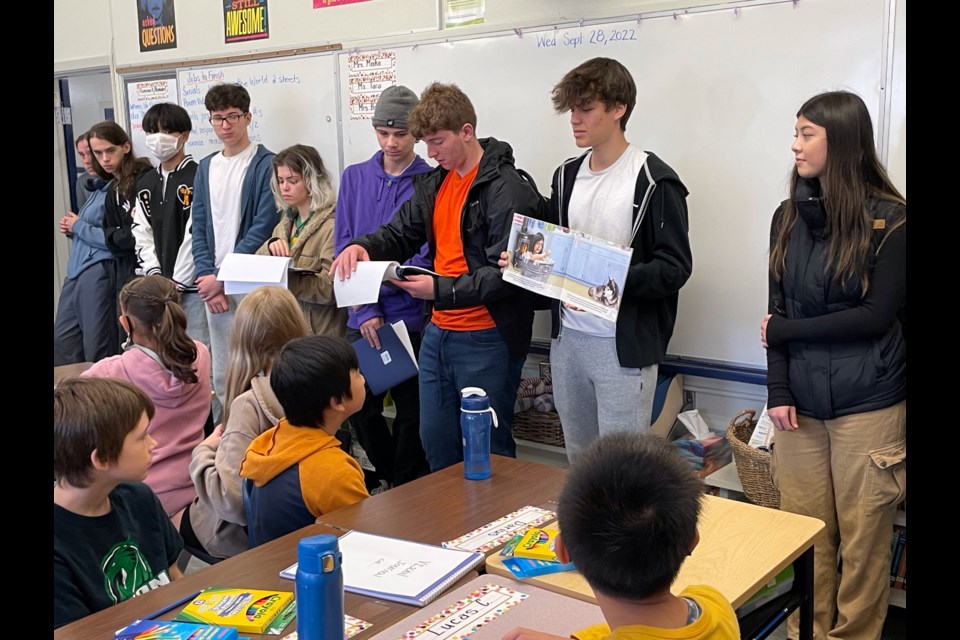Students at Hugh Boyd secondary’s social justice class focused on what they can do to actively contribute to reconciliation for the second National Day for Truth and Reconciliation.
One of the key themes this year, said teacher Michael Taylor, is highlighting “the resiliency of Indigenous people,” especially “the strength of the local Musqueam community despite the historical injustices they experienced.”
On Thursday, the students went to Dixon elementary to teach Grades 5 to 7 students about the subject and work collaboratively to complete an art and reflection activity on how they can personally contribute to reconciliation.
“After spending considerable time learning about the concepts of colonization, residential schools and contemporary Indigenous society, this year’s class (was) excited to impart this knowledge to Dixon students,” said Taylor.
“More than this, in partnering with them, we hope to instill the importance of being civically minded and engaged, and caring about and improving the lives of others.”
Scaled museum exhibit showcasing long Musqueam history
The students also worked hard to set up a residential school museum that all students and staff at Hugh Boyd walked through to observe and reflect on Thursday.
The museum featured a scaled timeline display that allowed students to visualize how long the Musqueam people have lived on this land compared to settlers and demonstrate the lasting impact of colonization and the Indian Act.
“A student (held) a sign at the very beginning, which indicates 9,000 years ago, and a thread of string will connect all dates on the timeline, moving from a student with a sign at 5,000 years, 2,000 years, and so on,” Taylor explained.
“The museum portion of our timeline starts from 1791 — a focal point, marking the beginning of an era when significant numbers of Europeans started to arrive on the Northwest Coast.”
At the centre of the museum was a three-panel display inspired by Hieronymus Bosch’s iconic painting, The Garden of Earthly Delights.
The first panel symbolized life in Indigenous societies before the settlers; the second showcased the tragedy and loss of residential schools (with real artifacts and archival images); while the third outlined the impact of racist governmental policies on Indigenous communities. The third panel also featured individual stories of strength and explored the initial steps taken toward reconciliation.
At the end of the display, students were invited to write down commitments they would make toward reconciliation.
“I feel like it is important that we take time to learn about our country’s dark history in an effort to work towards reconciliation. In the past, Indigenous voices weren’t always heard, so I think it’s important that we change that,” said student Jasmine Dulay, who contributed to the museum.
“While viewing the exhibit, I hope it (invoked) an emotional reaction in students, motivating them to learn more about the topic in their personal time.”



